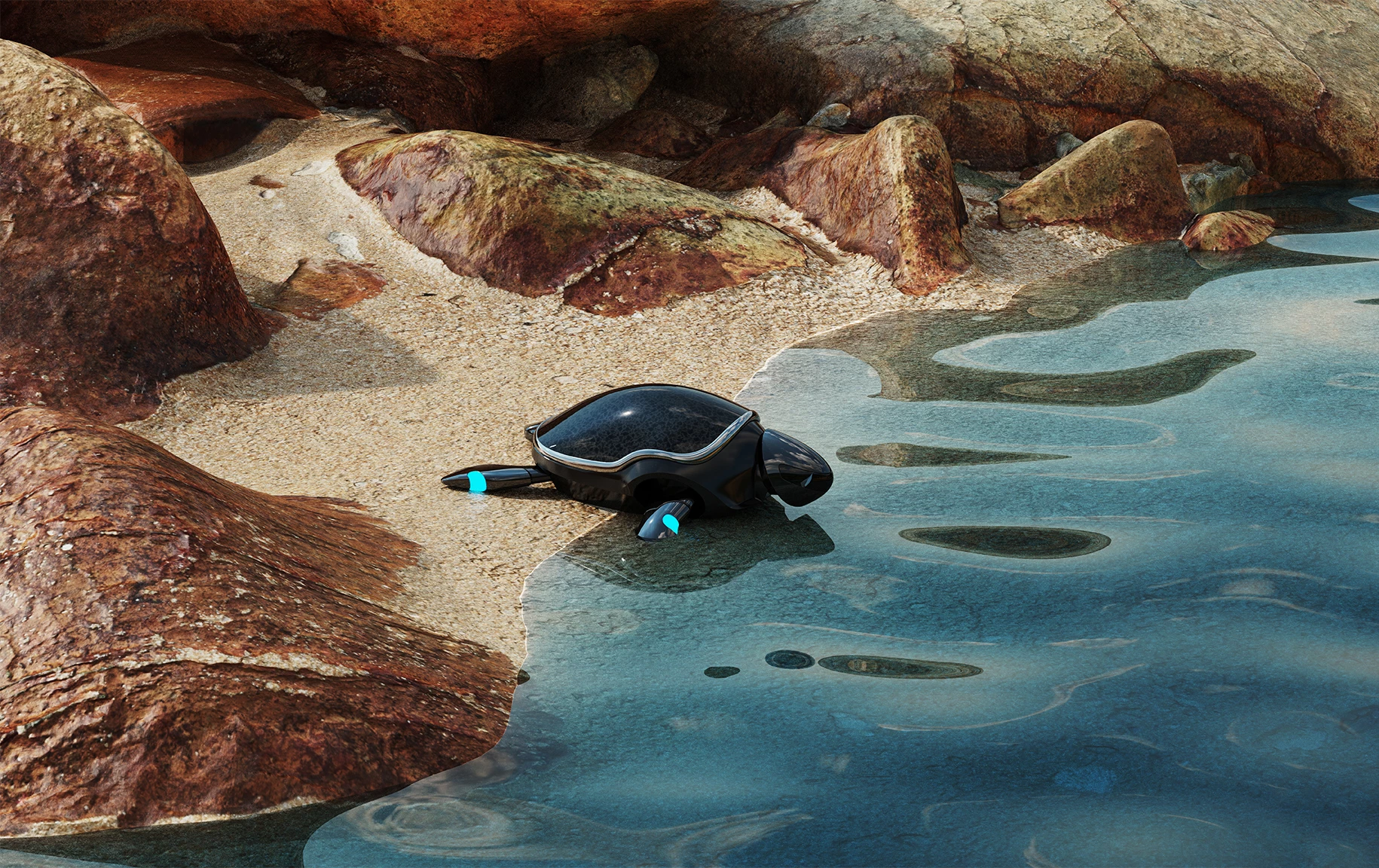If you're setting out to build an underwater robot that's speedy, maneuverable and versatile, why not just copy what already works in the natural world? That's exactly what Beatbot has done, with its bio-inspired Amphibious RoboTurtle.
Unveiled in prototype form last week at CES, the autonomous robot is designed for applications including ecological research, environmental monitoring, and disaster response.
As such, it can be equipped with hardware such as a water sampling unit, GPS module, ultrasonic sensors, and AI-enabled cameras. The latter reportedly allow it to perceive and react to changes in its environment, and to autonomously track/follow marine animals.

Because the RoboTurtle swims by quietly flapping its multi-jointed bionic legs, its designers claim that it should be less disruptive to wildlife than unnatural-looking robots with whining propellers. It additionally features a buoyancy control system that lets it rise and fall within the water column, and to float at the surface.
When floating, the robot can recharge its battery via solar panels on its back, plus it can transmit recorded data and receive updated mission instructions via satellite. The RoboTurtle's powered legs do allow it to come out of the water and drag itself along beaches, although it probably won't break any speed records when doing so.

While precise performance specs have yet to be released, a Beatbot representative tells us that the robot has a swimming speed close to that of a real sea turtle, and that it could conceivably swim all day if it were to periodically take solar-charging breaks.
And yes, the company (which is best known for its pool-cleaning robots) does plan to produce the Amphibious RoboTurtle commercially. We're told that its size and capabilities will be tailored for its intended use by each client.
That said, it likely won't be the only robotic turtle in the sea. Teams from ETH Zurich, the ARROWS project, and the National University of Singapore are all developing swimming turtlebots of their own.
Source: Beatbot








